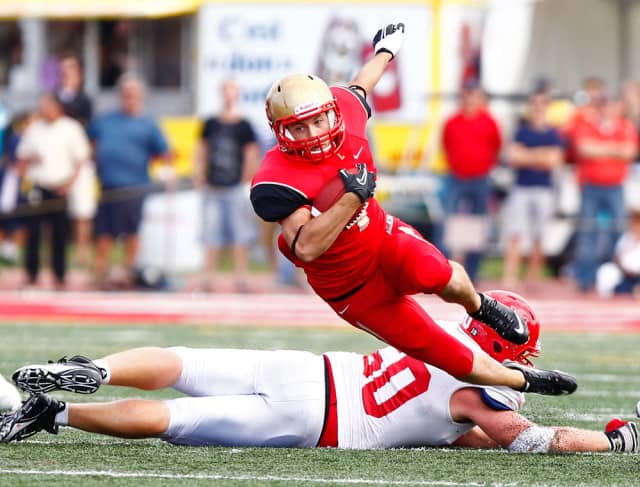SCOTT HASTIE
The Silhouette (McMaster University)

With seven Vanier Cup titles to their name, some think the Laval Rouge et Or are ready to join the NCAA.
HAMILTON (CUP) — The winds of change are blowing around Canadian Interuniversity Sport. David Grossman of Sportsnet 590, a Canadian radio show, hosted CIS President Leo MacPherson Dec. 16 to discuss a December meeting of university presidents.
MacPherson spoke at length about worries of a “talent drain,” which could hamper the quality of play in the CIS.
He said that while many university presidents would not say that the CIS has a crisis on its hands, most are concerned about the number of prospective Canadian student athletes migrating to the NCAA.
The concern comes while Simon Fraser University plays in their first full-membership season with the NCAA after leaving the CIS four years ago.
MacPherson went on to explain that the league found the loss of Canadian talent differs on a sport-by-sport basis. He pointed to women’s hockey as a particular area of concern.
The presidents’ meeting also included a Canada West proposal to have a “tiered-league” across Canada. In theory, the CIS would turn into a countrywide conference instead of the current divisional set-up. Athletic programs from Ontario University Athletics, Atlantic University Sport, Réseau du sport étudiant du Québec and Canada West conferences would be categorized by skill level and each respectively absorbed into a nationwide league.
MacPherson was skeptical of the idea.
“We have a very, very broad geographic land mass that we have to cover in Canada. I just don’t see the financial feasibility of that happening, but it is provocative dialogue,” MacPherson said.
One of the major points of the interview was insight into the workings of the CIS recruitment and eligibility rules, and the lack of a compliance office that would monitor athletic programs’ recruitment practices and player eligibility. The league boss explained how the CIS operates on an honour system and that here have been minimal problems with it thus far.
Eligibility talk didn’t stop there — the CIS is discussing extending the eligibility for student-athletes. The CIS currently allows students a maximum of five years of eligibility, and athletes competing in football must complete those five years within seven years of completing high school. Some university presidents brought talks of increasing the years of eligibility to seven or eight years.
MacPherson does not back the idea.
“I think we’ve got it just about right at five years,” he said.
The final issue discussed at the presidents’ meeting was the status of CIS scholarships in contrast to the NCAA.
The American operation has the ability to offer “full-ride” scholarships, meaning athletes can get residence, food, tuition and fees covered by their sport endeavors. In the CIS, scholarships can only cover tuition and fees, and the dollar amount that can be distributed varies from conference to conference.
The reason less money is available to CIS athletes is because of the budgets of athletic departments.
“What we see in the NCAA is the upper echelon of Division I, with packed football stadiums and packed basketball arenas. There are some serious dollars tied to that,” MacPherson said.
MacPherson commented that while the possibility of many future changes to the CIS continues to be debated, the league will continue to look for input from all university administrations.
—
Photo: Rseq1/Flickr